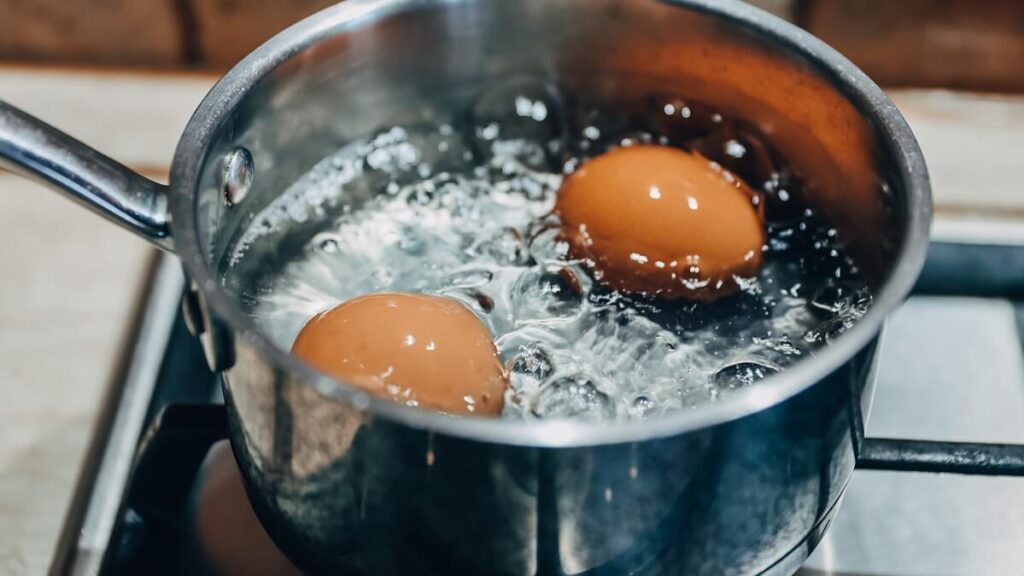A boiled egg. Should be simple right? But if you find it difficult to boil the egg just right for you, don’t worry, you’re not alone. We all get the basic concept – stove, pot, water, eggs – but why do they sometimes crack and other times not?
Once they’re in, how on earth can you tell what’s going on inside them? I find myself staring into a pot on the stove waiting for some higher being to tap me on the shoulder and tell me when to get the damn things out!
Recipes clutter the internet, some as simple as “five minutes” and some going as far as to describe the ideal altitude and millimetre thickness of your pot. I’m not joking.
We’ve trawled through these conflicting recipes, spent hours fighting off chooks and getting steam burns (not really, but you get the point) to bring you this reliable but realistic recipe for the perfect boiled egg.
Egg health and safety
First of all, let’s get some housekeeping out of the way – how to tell if your eggs have gone bad.
Flashback to primary school science. Get a wide cup or a bowl and fill it to about three-quarters with water. Plonk the eggs in. If they sink, they’re good. If they float, it means gas has developed inside and I’m sorry to say … they’re bad.
Some real science
The setting temperature for different parts of the egg is different. The yolk will set at around 80°C, whereas the egg white will set at 70°C. Also, the white of the egg is closer to the boiling water, meaning it will cook faster than the inside. Luckily, this works well for those of us who prefer a hard white with a softer yolk.
Now, there’s how
- Decide on how many eggs you plan to cook, then choose a pot that can fit them all comfortably but allows a little space between them.
- Make a small crack in the shell of each egg but don’t puncture the inner membrane that holds in the contents. It’s easiest to use a curved surface to achieve this. This will make the shell easier to peel away later.
- Place your eggs in your pot and fill with cold water until the tops of the eggs sit about a centimetre below the surface.
- Place the pot on the stovetop on high heat.
- Bring the water to a boil.
- Now turn off the heat and allow the eggs to cook in the boiled water. Count the minutes from this point onward following the guide below for the perfect boiled eggs your way!
The general rule for minutes-in-pot to what-my-egg-will-be-like is as follows:
Two minutes: the yolk is completely raw and the white isn’t set all the way through.
Four minutes: the yolk is gluggy and very runny but the white is fully set.
Six minutes: the yolk is cooked, but still a little runny in the centre and the white is fully set.
Eight minutes: the yolk is set but still quite soft, the white is fully set.
Ten minutes: both the yolk and the white are fully set.
Have a bowl of iced water ready to place the eggs in as soon as you take them out of the pot to make sure the cooking process stops immediately.
Once the eggs have cooled enough to be handled comfortably, voila! Knock the shell with a spoon to crack it and use the thumbs to peel the shell away.
Was this recipe useful? Are there any other so-called ‘simple’ recipes we can help you with? We’d like to thank Mark Matsumoto at norecipes.com for the science behind boiled eggs.
Also read: How to choose the right air conditioner or fan for summer

